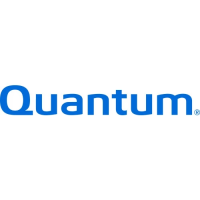Section 5
SCSI
Programming Guidelines
5.3
SCSI BUS CONDITIONS
The SCSI bus has two asychronous conditions: the A
TIENTION
condition and the RESET condition.
These conditions cause a
SCSI device to perfonn certain actions and can alter the phase sequence.
5.3.1
ATTENTION CONDITION
The A
TIENTION
condition allows an initiator to infonn a target that the initiator has a message ready. The
target may get this message at its convenience by perfonning a
MESSAGE
OUT
phase.
• The initiator creates the A
TIENTION
condition by asserting A TN
at
any time except during the
ARBITRA
nON
or BUS FREE phases.
• The ProDrive may respond with the MESSAGE
OUT
phase.
The initiator must keep
A TN asserted
if
more than one byte is to be transferred. The initiator may negate
the
ATN
signal at any time except while the
ACK
signal
is
asserted during a MESSAGE
OUT
phase.
Normally, the initiator negates
ATN
while REQ
is
true and
ACK
is false during the last REQI
ACK
handshake
of
the MESSAGE OUT phase.
5.3.2
RESET CONDITION
The RESET condition is used to immediately clear all SCSI devices from the bus. This condition takes
precedence over all other phases and conditions.
SCSI devices create the RESET condition by asserting
REQ for a minimum
of
a reset hold time. During the RESET condition, the state
of
all SCSI bus signals
other than
RST
is
not defined.
NOTE:
The ProD rive will never assert RST, but it will respond to a RST asserted by another SCSI
device.
When
RST is asserted, the ProDrive will release all SCSI bus signals (except RST) within a bus clear
delay
of
the transition
of
RST to true. The BUS FREE phase always follows the RESET condition.
5.4
SCSI BUS PHASE SEQUENCES
Phases are used on the SCSI bus in a prescribed sequence. In all systems, the RESET condition can abort
any phase and is always followed by the
BUS FREE phase. Also, any other phase can
be
followed by the
BUS FREE phase.
5.4.1 NON-ARBITRATING SYSTEMS
In systems which
do
not use the ARBITRATION phase. the BUS FREE phase is followed by the
SELECTION phase, then one
or
more
of
the information transfer phases (COMMAND, DATA, STATUS,
or
MESSAGE). See Figure 5-1.
5.4.2
ARBITRATING SYSTEMS
In systems which use the ARBITRA
nON
phase, the BUS FREE phase is followed by ARBITRATION,
then
SELECTION
or
RESELECTION, then one
or
more
of
the information transfer phases (COMMAND,
DATA, STATUS,
or
MESSAGE). See Figure 5-2.
SCSI Programming Guidelines
5·7

